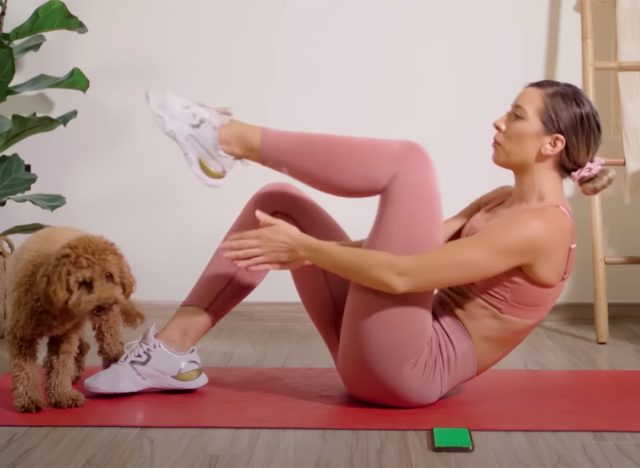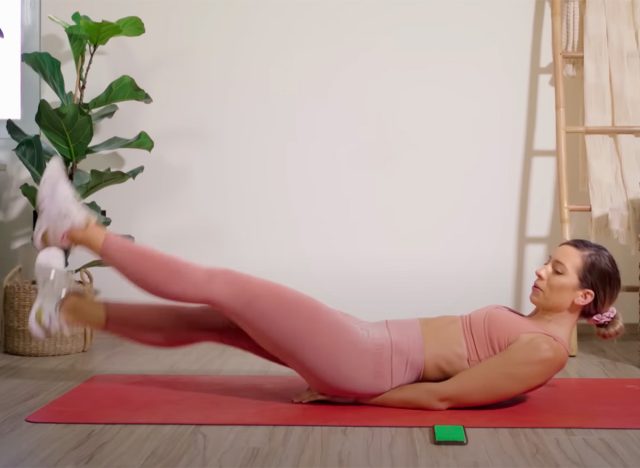7-Day Fat Loss Plan From Expert Lilly Sabri
Do you regularly make excuses that you don't have enough time to work out? According to one fitness expert, all you need is five minutes a day at home to blast your belly fat. Lilly Sabri is a fitness trainer and influencer with over 5 million followers on YouTube. She regularly shares workout videos on all of her platforms, most of which consist of short, at-home sets for quick results. "Today's home workout is your five minute burn belly fat blast. Yes, it is just five minutes long, but I can guarantee you are going to feel a burn," she says at the start of the clip. "I want you to do this for seven days in a row. That's all. Five minutes, seven days in a row and I can guarantee you're going to start to see and feel results. She adds that you can do one, two, or three rounds. We suggest watching the video and following along with Lilly during the 5-minute workout routine.
Knee to Elbow Crunches

"We're starting off with the left leg in. Hover the left arm's down by the side. We're going to crunch across the body. Then reach to the ankle and back. Good work, straight. Change onto the other side," she says during the first ab exercise.
Clap Sit Ups

Next up, she does a "full sit up," with one leg up, clapping through her leg. She then switches to the other side.
Twist Crunches

Next, "sitting high on those foot bones, you're going to roll back. Really pull the stomach muscles in nice and tight from there across and back down. Keep going guys. Across and back down."
RELATED: 11 Strength-Building Secrets From a Pro Trainer
Russian Twists

Next up is Russian twists. "The knees come together. We are going to rotate side to side. If you want to make it harder, lift those legs up. Both hands, side to side," she says.
Flutter Kicks

The next exercise? Flutter kicks. Lying down she places her hands in a diamond shape underneath the lower back. "From there, you're going to lift the legs up, lower them down as far as you can. Flutter, kick up and down for eight," she says. "Then open close for four. Keeping those legs there. You're going to drop one foot down, back up and then lift. Lower both. Work on flattening those legs down."
Heel Taps

She moves onto heel Taps. "We're now going for some reaches all the way to the ankle, really pulling those stomach muscles in tight and working into the waist," she says.
RELATED: Sophie van Oostenbrugge Shows Off Her Toned Glutes and Shares Her "Medium Day" Routine
Hip Dip and Seesaw Up

Her last exercises are hip dip and seesaw up. She starts in a plank position. "You're coming down onto your forearms. We're going to hit sit and seesaw, so we are here. We hit It. Then come forward," she says.
💪🔥Body Booster: Try incorporating a 5-minute ab routine into your day.





